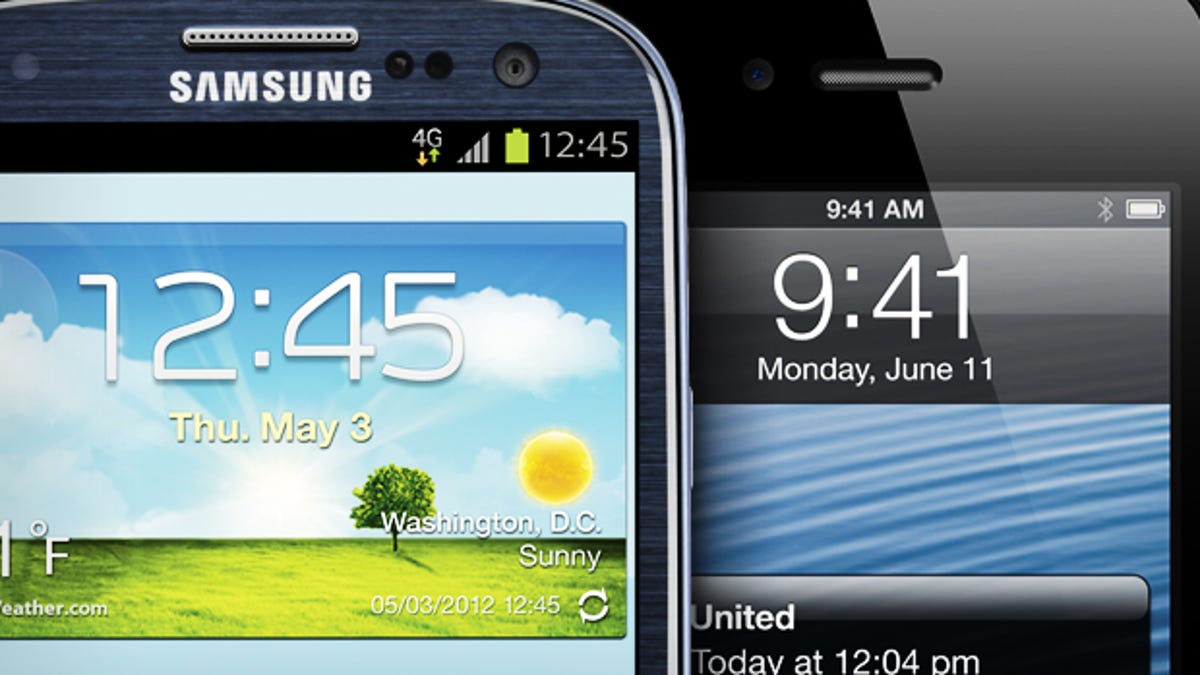AT&T's smartphone lineup: Stodgy no more
AT&T, which has never been known for cutting-edge style, has taken risks to quietly build an intriguing smartphone lineup.

Back in January there was no question which carrier had built the best portfolio, and I'll give you a hint: it wasn't AT&T.
By December, Verizon already had an embarrassment of riches, and the toughest high-end Android decision for holiday shoppers was which Big Red phone to get: the angular Motorola Droid Razr, the HTC Rezound audio genius, or the world's first Android 4.0 Ice Cream Sandwich phone, the Samsung Galaxy Nexus. With the budget HTC Rhyme and the broadest LTE coverage in the nation, Verizon was on fire.
Verizon fueled its momentum with the astounding long-life Droid Razr Maxx just after Motorola introduced the handset at CES.
Yet in the past few months, Verizon's verve has begun to flicker just enough for AT&T to illuminate its renewed vigor. Now before flinging your biting anti-AT&T protests my way, hear me out.
Grand slams
In addition to the iPhone 4S (and assuredly the next iPhone), AT&T has the two most desirable Android 4.0 ICS handsets available right now or soon: the HTC One X and the Samsung Galaxy S III (3). This isn't to say that AT&T is unique here, especially since the latter is slated for five well-known carriers. AT&T's bright moment may not even last long, since any other rival could easily and equally eclipse AT&T's currently strong roster.
However, AT&T does deserve credit for locking down an exclusive red shade we'll see in the coming weeks. T-Mobile's GS3 is also on sale now, but at a higher price, and without LTE support (AT&T doesn't offer the phone in its 32GB form, though.)
Taking risks
Despite having won a reputation for conservatism, AT&T has also taken the biggest risk of all its cohorts in supporting Microsoft's Windows Phone OS. It has the largest and most varied Windows Phone portfolio by far, including the edgy Nokia Lumia 900, and the solid Samsung Focus S, HTC Titan II, and Samsung Focus 2.
Granted, last week's Windows Phone 8 unveiling threw cold water over the entire lineup of now-obsolete Windows phones; however, AT&T is still in position to cherry-pick which of the forthcoming dual-core, HD, LTE handsets it wants, especially from Nokia, a company trying hard to be the next mobile comeback kid.
AT&T has also proven itself open -- even daring -- by signing on the promising but ultimately disappointing Sony Xperia Ion, a CES looker from another company eyeing a U.S. resurgence under a new regime.
The carrier also went out on a limb with the Samsung Galaxy Note. The "phablet," whose enormous 5.3-inch screen could have painfully belly flopped, sold a respectable 7 million units worldwide.
Other winners and oddballs
AT&T's smart, crowd-pleasing choices continue with the Samsung Galaxy S II and its larger Skyrocket variant, and the HTC Vivid.
Both the Vivid and Skyrocket were among the first to get LTE support, and both have excellent cameras and specs. In addition, there's LG's Nitro HD, which challenges those two in media, performance, and specs.
Another personal favorite is the Pantech Burst, a post-CES newbie that offers tremendous Android and LTE value in multiple hues. With the Pantech Crossover, AT&T nods toward those with more rough-and-tumble lifestyles who don't want to sacrifice smartphone features for a rugged device.
Not every phone in the portfolio is a winner. AT&T has some admittedly odd choices in the awkwardly shaped Pantech Pocket, the wacky HTC Status "Facebook phone," and the seriously questionable Samsung DoubleTime.
The Death Star still lives
Now comes the part some of you have been waiting for, AT&T's unsightly warts and prickly thorns, which have earned AT&T the less-than-affectionate moniker "The Death Star" in some CNET circles.
In the past, the carrier hasn't been the most pleasant companion for a two-year contract. Its voice network has long been considered spotty, with dropped calls and dead zones; and its 3G, 4G, and 4G LTE data networks are equally problematic in some areas (like San Francisco, which is notorious for every carrier, in all fairness).
It also hasn't been the quickest to roll out OS updates, and there have been scandals, like the Motorola Atrix 4G's missing key features at launch, such as 1080HD video playback and a blocked HSUPA radio.
AT&T's 4G LTE network is coming along nicely now, though at a more plodding rate than Verizon's energetic build-out, so it will take longer to cover the carrier's full subscriber base.
AT&T still isn't cool, but it's better
AT&T's latest string of moderate successes doesn't make the carrier trendy. Windows Phone still has a way to go to prove itself, and AT&T has to compete with other carriers for its three best phones, the Samsung Galaxy S III, iPhone 4S, and HTC One X (Sprint has the HTC Evo 4G LTE, remember, but no LTE network.)
AT&T has no catchy campaigns like Verizon's Droid commercials, no flashy logo, and one of the least user-friendly Web sites in all of mobile.
However, if AT&T can keep filling its portfolio with smart, desirable, and occasionally risk-taking models, and keep investing in its network infrastructure, chances are good it can make over its stodgy image as well -- if it tries.

